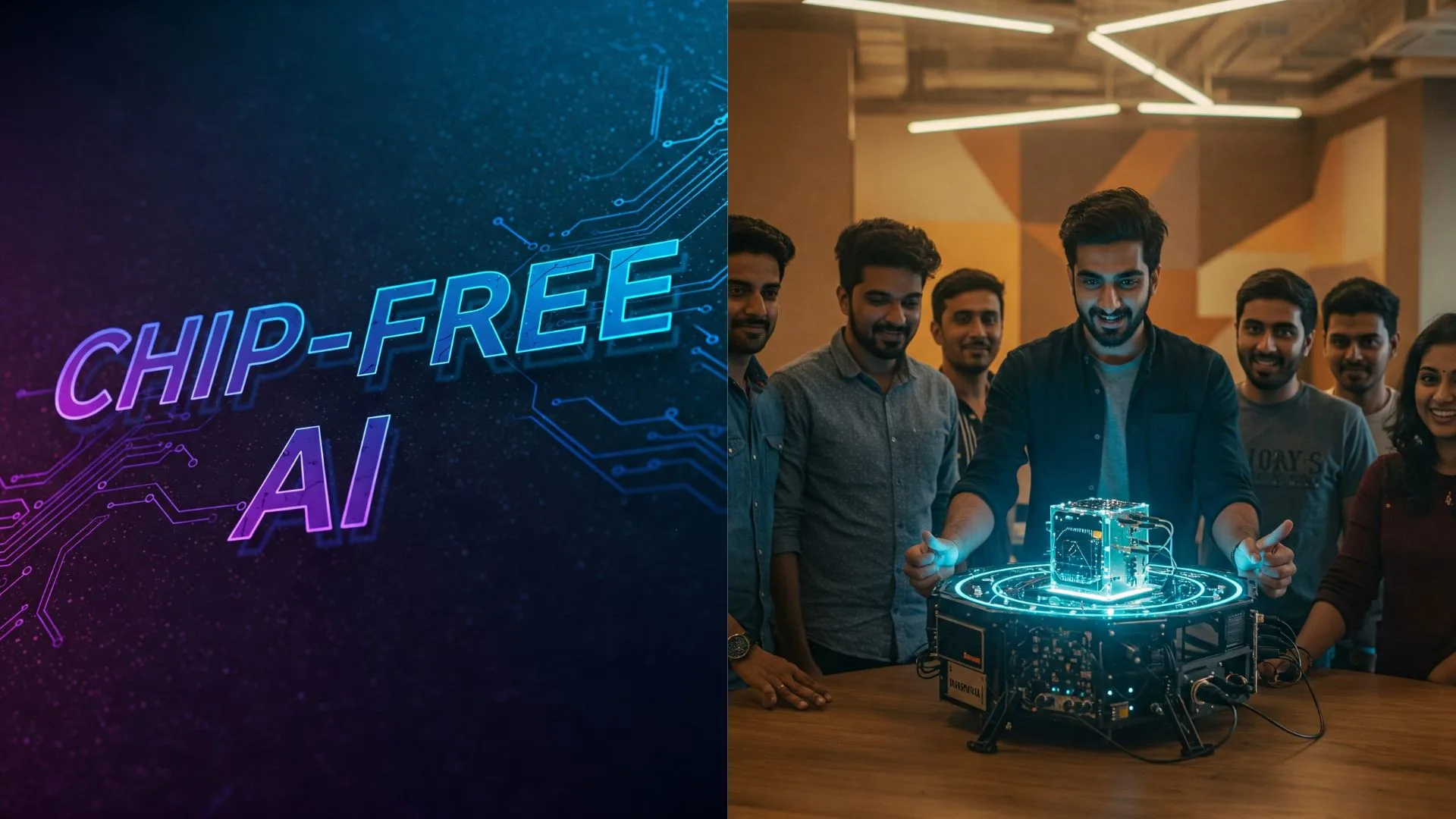Introduction
In a revolutionary innovation, an Indian startup AI firm has created a system that is capable of executing artificial intelligence (AI) models without the need for high-end, costly chips. This revolution may bring AI technology within reach of all businesses, researchers, and developers in parts of the world that lack access to sophisticated hardware.
The startup’s solution addresses one of the biggest challenges in AI dependence on powerful GPUs and specialized processors like NVIDIA’s A100 or H100. By optimizing algorithms and leveraging novel computing techniques, this Indian firm is paving the way for cost-effective AI deployment.
The Challenge: AI’s Reliance on Advanced Chips
AI and machine learning (ML) models, particularly large language models (LLMs) such as ChatGPT, often need high-performance GPUs or TPUs to train and make inferences. The chips are costly, power-hungry, and frequently short in supply given worldwide demand.
For startups, small businesses, and developing-country academic institutions, procuring similar hardware is a significant barrier. This forms a technological gap where only deep-pocketed corporations can exploit leading-edge AI.
The Indian Startup’s Solution

The Indian startup has created a software-based optimization platform that enables AI models to execute effectively on common or low-end hardware. Some of the main features of their innovation are:
- Algorithmic Efficiency – The system employs lightweight neural networks and model compression methods to minimize computational burden.
- Edge Computing Integration – By processing data locally rather than relying on cloud-based GPUs, the system reduces latency and expense.
- Hybrid Processing – Intelligent balancing of CPU and GPU capabilities to achieve maximum performance without the need for high-end chips.
- Energy-Efficient AI – Low power consumption that makes it a feasible option to use in locations with unreliable electricity supply.
Possible Impact on Industries
This invention has the potential to revolutionize several industries:
- Healthcare – AI-based diagnosis in rural healthcare centers without high-end hardware.
- Agriculture – Intelligent agricultural solutions based on low-cost AI for crop management.
- Education – Low-cost AI tutors and language models for schools in the developing world.
- Small Businesses – Local businesses can utilize AI-powered analytics with minimal investments.
Global Implications & Future Prospects
This technology, if scalable, can diminish the West’s hold on AI by allowing emerging economies to innovate without relying on high-end chips imported from overseas. It also resonates with India’s drive for self-reliance in technology (Atmanirbhar Bharat).
According to experts, such innovations can lead to:
- Reduced AI adoption costs globally.
- Accelerated AI integration in mobile and IoT devices.
- A transformation in the semiconductor sector, with reduced dependence on bleeding-edge fabrication.
Conclusion
This Indian AI startup‘s achievement demonstrates that innovation can beat hardware constraints. By making AI more accessible and affordable, they are not only addressing a technical problem they are closing the global AI gap.
As the technology advances, we could witness another set of AI applications on ordinary devices, which could open doors to possibilities for millions who were otherwise excluded from the AI revolution.

